| Hannah Adams, 1755-1831 Hannah
Adams, a distant cousin of John Adams, is known as the first professional woman writer in
the United States. When her father’s business failed, Hannah began writing to support
herself. She wrote theological works and histories, including Summary History of New
England (1799), the first history to trace the United States from the Mayflower to the
ratification of the federal Constitution.
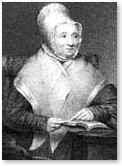
|
A Memoir of Miss Hannah Adams, Written by Herself with
Additional Notices, by a Friend. Boston: Gray and Bowen, 1832.
|
Frances Hodgson Burnett, 1849-1924
Born in Manchester, England, Burnett moved to rural Tennessee at age sixteen with her
financially bankrupt family. To support herself, she began writing for American magazines.
Though she began writing novels for adults, she gained lasting success writing for
children. She is best known for Little Lord Fauntleroy, The Secret Garden,
and A Little Princess.
The Secret Garden. New York: Frederick A. Stokes
Company, 1911.
|
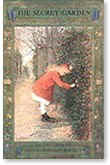
|
Kate Chopin, 1851-1904
Kate Chopin was born in St. Louis, Missouri. In 1870, she married
Oscar Chopin and moved to Louisiana, living in both New Orleans and Natchitoches. She
began to write after her husband died of swamp fever in 1883, and she was forced to
support herself and her children. Bayou Folk (1894), a collection of stories about
life in Louisiana, gave her national recognition. Her popularity soon ended with the
publication of her controversial, but now critically aclaimed novel, The Awakening
(1898), which deals with female independence through a suicidal female heroine who leaves
her husband and children in an attempt to discover her personal freedom.
Bayou Folk. Boston: Houghton, Mifflin, 1894. First editon.
Maria Edgeworth, 1767-1849
With encouragement from her father, Richard Lovell Edgeworth, Maria Edgeworth wrote a
string of books aimed at children as well as novels for adults. She lived a majority of
her life in Ireland, and her novels focus on Irish common life. These the include Castle
Rackrent (1800), Ennui (1809), The Absentee (1812), and Ormond (1817),
which influenced Sir Walter Scott’s treatment of Irish regional subject matter. In
her writings, she deals with sexual equality and often features a woman as the central
character.
Frank a Sequel to Frank in Early Lessons. London: Printed for
R. Hunter, and Baldwin Cradock and Joy, 1822. 3 vols. First edition.
Moral Tales for Young People. London, New York: George
Routledge and Sons, 188-? New edition with eight illustrations.
Martha Finley, 1828-1909
Her Elsie character "attained more widespread interest and affection" than
any other character in juvenile fiction of the time with the exception of Twain’s
Huckleberry Finn. Because her family was against the idea of advertising her name, she
used the pseudonym, Martha Farquharson. The idea for her Elsie character came to her while
bedridden with a back ailment and dependent upon her stepbrother. The twenty-eight volumes
of her Elsie series "follow in the tradition of the stories of pietistic children
born with an instinct for good and evil as delimited by the Puritan code, children who not
only fight off temptations but also enlighten and urge to salvation their elders, thereby
appeasing an angry God, eluding Satan, and earning their rewards in heaven when they die
holy and dramatic deaths sometime between the ages of two and twelve. . . . Elsie actually
did pass briefly beyond the boundaries of the living in the second volume of the series,
but miraculously she rose again to live a long life" (Smedman).
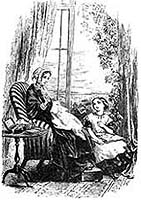
|
Elsie Dinsmore. New York: Dodd & Mead, 1867. |
Maria Graham (Lady Callcott), 1785-1842Maria
Graham traveled extensively with her father, Admiral George Dundas, and then with her
husband, Captain Thomas Graham, who died in 1822 during their trip to South America. She
returned to London in 1824, and in 1827 married Sir Augustus Wall Callcott, the celebrated
artist. She died in 1842, after being an invalid for several years. Her many works include
travels to India, Rome, Brazil, and Chile; essays on artists; and, her most famous, Little
Arthur’s History of England.
Journal of a Residence in Chile, during the Year 1822. And a
Voyage from Chile to Brazil in 1823. London: Longman, Hurst, Rees, Orme, Brown, and
Green, and John Murray, 1824.
Journal of a Voyage to Brazil, and Residence There, during Part of the Years
1821, 1822, 1823. London: Longman, Hurst, Rees, Orme, Brown, and Green, 1824.
|
Sarah Josepha Buell Hale, 1788-1879As
editor for the popular Ladies’ Magazine (later renamed Godey’s
Lady’s Book), Hale earned widespread influence with American women from 1828 to
1877. She began writing after her husband died, when she was left pregnant and with four
other children. After having a book and novel published, she was invited by John L. Blake
to edit Ladies’ Magazine. The women writers she accepted as editor helped to
promote women as professional writers. The Magazine included correspondence,
stories, poetry, music, and fashion plates. |
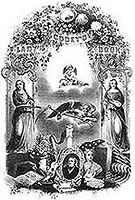
|
Hale preferred to depict women in simple dress as opposed to other magazines, which showed
women in more flamboyant, European styles. She argued that simple attire promoted a more
physically active lifestyle. However, her fashion sense lacked popular appeal, and she
chose to discontinue fashion plates rather than promote a more European style.In some
of Hale’s most notable editorials, she took up the cause to make Thanksgiving a
national holiday. Her persuasive writing campaign eventually convinced Abraham Lincoln to
officially declare Thanksgiving a national holiday in 1863, in the midst of the Civil War.
|
Gail Hamilton, 1833-1896Hamilton, an essayist,
journalist, and fiction writer, was born Mary Abby Dodge in Hamilton, Massachusetts, and
lived as a school teacher and governess in New England and Washington, D.C. In the late
1850s, she began publishing for the anti-slavery paper, the National Era, under the
pen name, Gail Hamilton. She went on publish books on women’s rights, politics,
religion, and children’s subjects. In 1867, she sued her publisher, Ticknor and
Fields, for deliberately underpaying her in relation to the industry norm. Although she
was unsuccessful, she "made a significant contribution to the history of the
professional (women) writers, and she exposed the Gentleman Publisher’s market for
what it really was: a relationship based on power, even when conducted as a
friendship" (Coultrap-McQuin).
Woman’s Wrongs: A Counter-Irritant.
Boston: Ticknor and Fields, 1868. First edition.
Dodge wrote Woman’s Wrongs as a critical response to Reverend John
Todd’s Woman’s Rights (1867).
Woman’s Worth and Worthlessness. The
Complement to "A New Atmosphere." New York: Harper & Brothers, 1872.
First edition.
Matilda Charlotte Houstoun,
1815?-1892
Houstoun was born into the British upper class. Her mother was the daughter of a
wealthy baronet and her father was Deputy Surveyor of Royal Parks. Much to Houstoun’s
annoyance, she was educated by a Welsh governess who forbade her to read novels.
Ironically, she went on to write over twenty books, including novels and travel
literature. Texas and the Gulf of Mexico is an account of the year she spent
sailing around the Americas with her husband on their yacht.
Texas and the Gulf of Mexico; or Yachting in the New World.
London: John Murray, 1844.
Christina Rossetti, 1830-1894
Christina Rossetti was the youngest of four children of Gabriele Rossetti, an Italian
exile and Dante scholar. Christina’s siblings chose to pursue artistic and literary
careers. Her brother Dante Gabriel, painter and poet, founded the Pre-Raphaelite
brotherhood, a group promoting beauty in art and a harkening back to more primitive,
medieval themes. The other two children, William Michael and Maria Francesca, were also
published writers. Christina began publishing poems in D.G. Rossetti’s Pre-Raphaelite
journal, The Germ (1848). Her first collection, Goblin Market and Other Poems
(1862), has been considered the first literary success of the Pre-Raphaelites. She went on
to publish both for children and adults throughout her life. She was a devout Christian,
and religious themes are often central to her writing. |
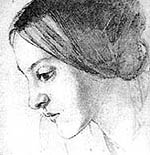
|
New Poems by Christina Rossetti Hitherto Unpublished or Uncollected. Ed.
William Michael Rossetti. London and New York: Macmillan and Co., 1896. First edition.
|
| The production of Christina Rossetti’s books was treated
as an artistic endeavor. They were designed by D.G Rossetti and other artists affiliated
with the Pre-Raphaelite movement; thus, great care was given to their aesthetic
appearance. |
Goblin Market and Other Poems. London and Cambridge: Macmillan and Co., 1865.
Second edition. Designed and illustrated by Dante Gabriel Rossetti. |
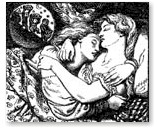
|
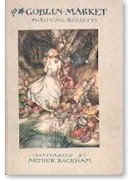
|
Goblin Market. Philadelphia: J.B. Lippincott Co.,
[1933]. Illustrated by Arthur Rackham |
| The Prince’s Progress and Other Poems.
London: Macmillan & Co., 1866. Designed and illustrated by Dante Gabriel Rossetti,
engraved by W.J. Linton. First edition. |

|
Speaking Likenesses. London: Macmillan and Co., 1874. First edition.
Illustrated by Arthur Hughes. |
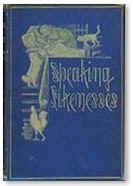
|
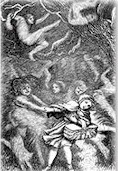
|
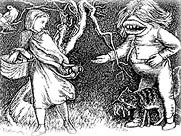
|
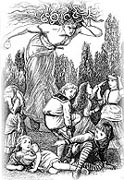
|
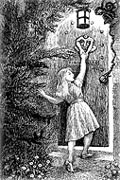
|
Joanna Southcott, 1750-1814Born in East Devon
to a poor farming family, Joanna Southcott spent a majority of her life living normally as
a domestic servant and upholsterer. However, at age forty-two, she turned prophetess.
Southcott began to interpret a rapidly changing England, one of industrial growth and
subsequent social unrest, as a sign of God’s wrath. "On Christmas 1791, she
joined the Wesleyans. On Easter Sunday 1792, she predicted that the locusts of Abaddon
would be loosed upon the world." Warnings and solutions to save the world came to her
in a voice. In response, she took her messages and life’s savings to a printer and
published her first book, The Strange Effects of Faith, in 1801. She soon acquired
thousands of followers and set up a ministry in London. She published sixty-five books
before her death in 1814. (Rosenberg)
The Trial of Joanna Southcott, During Seven Days, Which Commenced on the
Fifth, and Ended on the Eleventh of December, 1804. At the Neckinger House, Bermondsey,
Near London. London: Printed by S. Rousseau, sld by E.J. Field, W. Symonds,
and the Miss Eveleighs, 1804.
Southcott went to trial to defend herself against claims that she was an impostor.
A Dispute between the Woman and the Powers of Darkness. London:
Marchant and Galabin, 1813. Second edition.
In this seven-day long exchange between Southcott and Satan, or Satan’s friends,
Satan dares to curse both God and Southcott. She eventually persuades the evil forces to
return to God.
|

|
The Third Book of Wonders, Announcing the Coming of Shiloh; with a Call to the Hebrews.
London: Printed by W. Marchant, 1814. Southcott predicted that she would give birth to
a second messiah called "Shiloh." Even though she reportedly died without ever
having given birth, her followers continued to believe in her prophetic voice. Some
speculated that a child had been born, but was immediately sent to heaven and would return
later.
|
Johanna Spyri, 1827-1901Spyri was born in
Hirzel, Switzerland, and spent her life around Hirzel and Zurich. She began publishing at
age forty-three out of a desire to contribute money to the Franco-Prussian war.
Altogether, Spyri wrote sixteen books, which include novels and short story collections.
Although her work was mainly for children’s entertainment, she also tried to teach
adults how to educate children. She is best known for Heidi (1880-1881), the
classic tale of the Swiss orphan taken from her grandfather’s alpine hut to live as a
companion in the Sesemann’s confining and stern Frankfurt household. The Heidi
books featured on exhibit are part of the Gustine Weaver Collection, UNT Libraries, Rare
Book Room.
Heidi: Her Years of Wandering and Learning: A Story for Children and Those
Who Love Children. Trans. Louise Brooks. Boston: DeWolfe & Fiske Company,
c1884. One of the first editions translated into English.
Heidi. Boston: Ginn and Company, 1899.
Heidi: A Story for Girls. Trans. H.A. Melcon. New York: A.L.
Burt Company, 1901.
Heidi. Trans. Elisabeth P. Stork. Philadelphia and London: J.B.
Lippincott Company, c1915.
Heidi. New York: Thomas Y. Crowell Company, 1927. Illustrated
by Constance Whittemore.
Harriet Beecher Stowe, 1811-1896
Although best known for her antislavery novel, Uncle Tom’s Cabin, Harriet
Beecher Stowe also wrote nine other novels, short fiction, and nonfiction. Her nonfiction
includes her travel sketches, published as Sunny Memories of Foreign Lands. The
book accounts her travels starting in 1853, when Stowe accepted an invitation to Europe to
escape the criticism she received from the publication of Uncle Tom’s Cabin.
On her tour, she visited England, Scotland, France, Luxembourg, Switzerland, Germany, and
Belgium. Sunny Memories was well liked and often used as a guidebook for travelers.
Sunny Memories of Foreign Lands. Boston: Phillips,
Sampson, and Company; New York: J.C. Derby, 1854. 2 vols. |
|